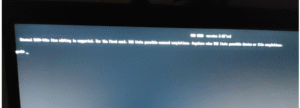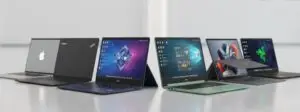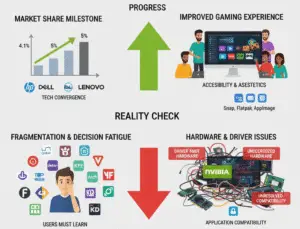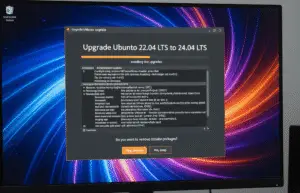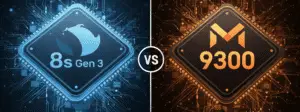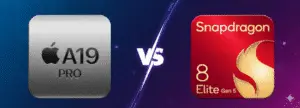
 Master Your Windows PC: Essential Commands for Power Users
Master Your Windows PC: Essential Commands for Power Users
Whether you’re an IT pro, developer, or just a Windows enthusiast, knowing the right commands can save time, troubleshoot issues, and unlock hidden features. This guide covers 50+ essential Windows commands to control, optimize, and secure your system like a pro.
 Why Learn Windows Commands?
Why Learn Windows Commands?




Let’s break them down into key categories.
 System Management & Diagnostics
System Management & Diagnostics
1. services.msc – Manage Running Services
What it does: Opens Windows Services Manager (start/stop background processes).
Example:
Stop Windows Update temporarily if it’s slowing down your PC.
2. taskschd.msc – Task Scheduler
What it does: Automate tasks (run scripts, programs at set times).
Example:
Schedule a daily backup script at midnight.
3. diskmgmt.msc – Disk Management
What it does: Manage partitions, format drives, assign letters.
Example:
Extend your C: drive if it’s running out of space.
4. devmgmt.msc – Device Manager
What it does: Check hardware drivers (update/disable devices).
Example:
Fix a Wi-Fi adapter that’s not working.
5. msconfig – Startup & Boot Manager
What it does: Control startup programs & boot options.
Example:
Disable unnecessary startup apps to speed up boot time.
6. perfmon.msc – Performance Monitor
What it does: Track CPU, RAM, disk usage in real-time.
Example:
Find out which app is slowing down your PC.
7. secpol.msc – Local Security Policies
What it does: Configure password rules, user permissions.
Example:
Enforce stronger passwords on a work PC.
8. gpedit.msc – Group Policy Editor
What it does: Customize Windows settings (Pro/Enterprise only).
Example:
Disable USB drives for security.
 Control Panel Shortcuts
Control Panel Shortcuts
9. appwiz.cpl – Uninstall Programs
What it does: Opens Programs and Features.
Example:
Remove bloatware pre-installed by manufacturers.
10. control folders – Folder Options
What it does: Configure file explorer settings.
Example:
Show hidden files (useful for troubleshooting).
11. sysdm.cpl – System Properties
What it does: Check PC name, performance settings.
Example:
Change computer name in a work network.
12. firewall.cpl – Windows Firewall
What it does: Manage inbound/outbound traffic rules.
Example:
Block a suspicious app from accessing the internet.
13. powercfg.cpl – Power Options
What it does: Adjust battery/power plans.
Example:
Set high performance mode for gaming.
 Networking & Connectivity
Networking & Connectivity
14. ipconfig – IP Address Check
What it does: Shows IP, DNS, gateway.
Example:
ipconfig /release→ipconfig /renew(fixes no internet issues).
15. ncpa.cpl – Network Adapters
What it does: Manage Wi-Fi/Ethernet connections.
Example:
Disable Wi-Fi when using Ethernet.
16. ping google.com – Test Connectivity
What it does: Checks if a website/server is reachable.
Example:
If
pingfails, your internet is down.
17. tracert google.com – Network Path
What it does: Shows route data takes to reach a server.
Example:
Find where internet slowdowns happen.
18. netsh wlan show profiles – Saved Wi-Fi Passwords
What it does: Lists all stored Wi-Fi networks.
Example:
netsh wlan show profile name="WiFiName" key=clear→ reveals password.
 Troubleshooting & Maintenance
Troubleshooting & Maintenance
19. dxdiag – Hardware Diagnostics
What it does: Checks GPU, sound, DirectX issues.
Example:
Diagnose game crashes due to missing drivers.
20. eventvwr.msc – Event Viewer
What it does: Logs system errors, warnings.
Example:
Find why Windows crashed last night.
21. sfc /scannow – System File Checker
What it does: Scans & repairs corrupted Windows files.
Example:
Fix Blue Screen of Death (BSOD) errors.
22. chkdsk /f – Disk Error Repair
What it does: Fixes hard drive errors.
Example:
Run if your PC freezes often.
23. cleanmgr – Disk Cleanup
What it does: Deletes temporary files, cache.
Example:
Free up 10GB+ of space in minutes.
 Bonus: Productivity Shortcuts
Bonus: Productivity Shortcuts
24. %temp% – Clear Temp Files
What it does: Opens temporary files folder (safe to delete).
25. mstsc – Remote Desktop
What it does: Connect to another PC remotely.
26. shutdown /r /t 0 – Instant Restart
What it does: Reboots PC immediately.
27. notepad – Quick Notes
What it does: Opens Notepad in seconds.
 Final Thoughts
Final Thoughts
These 50+ Windows commands help you:




